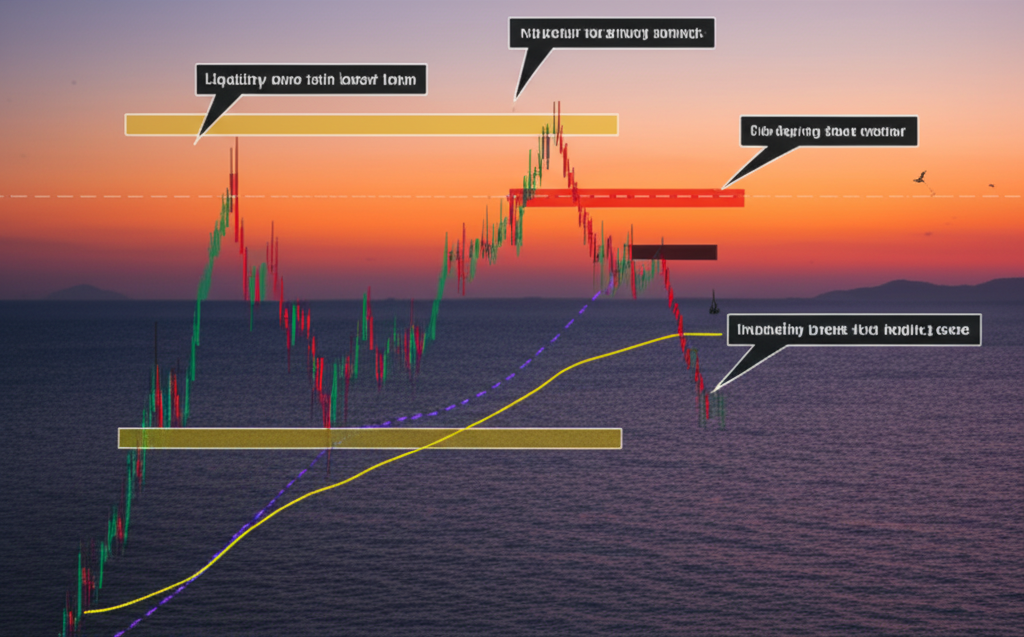Deriv Smart Money Strategy - Trade Like Institutions
Master the smart money concept on Deriv. Learn how to identify institutional order flow, liquidity zones, and market structure breaks for profitable trading.

Deriv Smart Money Strategy - Trade Like Institutions
The Smart Money Concept (SMC) has revolutionized retail trading by providing insights into how institutional traders operate. This comprehensive guide will teach you how to implement smart money strategies on the Deriv platform for consistent profits.
Understanding Smart Money Concept
What is Smart Money?
Ready to Start Automated Trading?
Smart money refers to institutional traders, banks, and large financial institutions that move markets. These entities have:
Key Smart Money Principles
Ready to Start Automated Trading?
Market Structure
Liquidity Concepts
Ready to Start Automated Trading?
Core Smart Money Elements
1. Market Structure Breaks (MSB)
Identifying Structure Breaks
Ready to Start Automated Trading?
Trading Structure Breaks
Ready to Start Automated Trading?
2. Order Blocks (OB)
What are Order Blocks?
Trading Order Blocks
Ready to Start Automated Trading?
3. Fair Value Gaps (FVG)
Identifying Fair Value Gaps
Ready to Start Automated Trading?
Trading Strategies
Ready to Start Automated Trading?
4. Liquidity Zones
Types of Liquidity
Liquidity Hunting
Ready to Start Automated Trading?
Implementing SMC on Deriv
Best Markets for SMC
Ready to Start Automated Trading?
Synthetic Indices
Forex Pairs
Ready to Start Automated Trading?
Timeframe Selection
Multi-Timeframe Analysis
Ready to Start Automated Trading?
Smart Money Trading Strategies
Strategy 1: Structure Break and Retest
Setup Criteria
Ready to Start Automated Trading?
Entry Rules
Ready to Start Automated Trading?
Risk Management
Strategy 2: Order Block Trading
Identification Process
Ready to Start Automated Trading?
Execution Guidelines
Ready to Start Automated Trading?
Strategy 3: Liquidity Grab Reversal
Setup Requirements
Ready to Start Automated Trading?
Trade Management
Advanced SMC Concepts
Ready to Start Automated Trading?
Institutional Order Flow
Reading Order Flow
Ready to Start Automated Trading?
Volume Analysis
Market Maker Models
Accumulation Phase
Ready to Start Automated Trading?
Manipulation Phase
Ready to Start Automated Trading?
Distribution Phase
SMC Bot Development
Ready to Start Automated Trading?
Automated SMC Trading
Key Components
Ready to Start Automated Trading?
Implementation Challenges
Bot Configuration
Ready to Start Automated Trading?
Entry Conditions
Risk Parameters
Ready to Start Automated Trading?
Psychology of Smart Money Trading
Mindset Requirements
Ready to Start Automated Trading?
Patience
Discipline
Ready to Start Automated Trading?
Continuous Learning
Common Mistakes
Ready to Start Automated Trading?
Over-Analysis
Revenge Trading
Ready to Start Automated Trading?
Conclusion
Smart Money Concept provides a powerful framework for understanding market dynamics and trading with institutional flow. Success requires patience, discipline, and continuous learning.
Start by mastering basic concepts, then gradually incorporate advanced techniques. Remember that even smart money strategies require proper risk management and emotional control.
Ready to Start Automated Trading?
The key is to think like an institution while maintaining the agility of a retail trader.
Ready to Start Automated Trading?
About Frank FX
Professional trader and bot developer with over 5 years of experience in automated trading systems. Specializes in Deriv bots and synthetic indices trading strategies.
Contact Frank FX